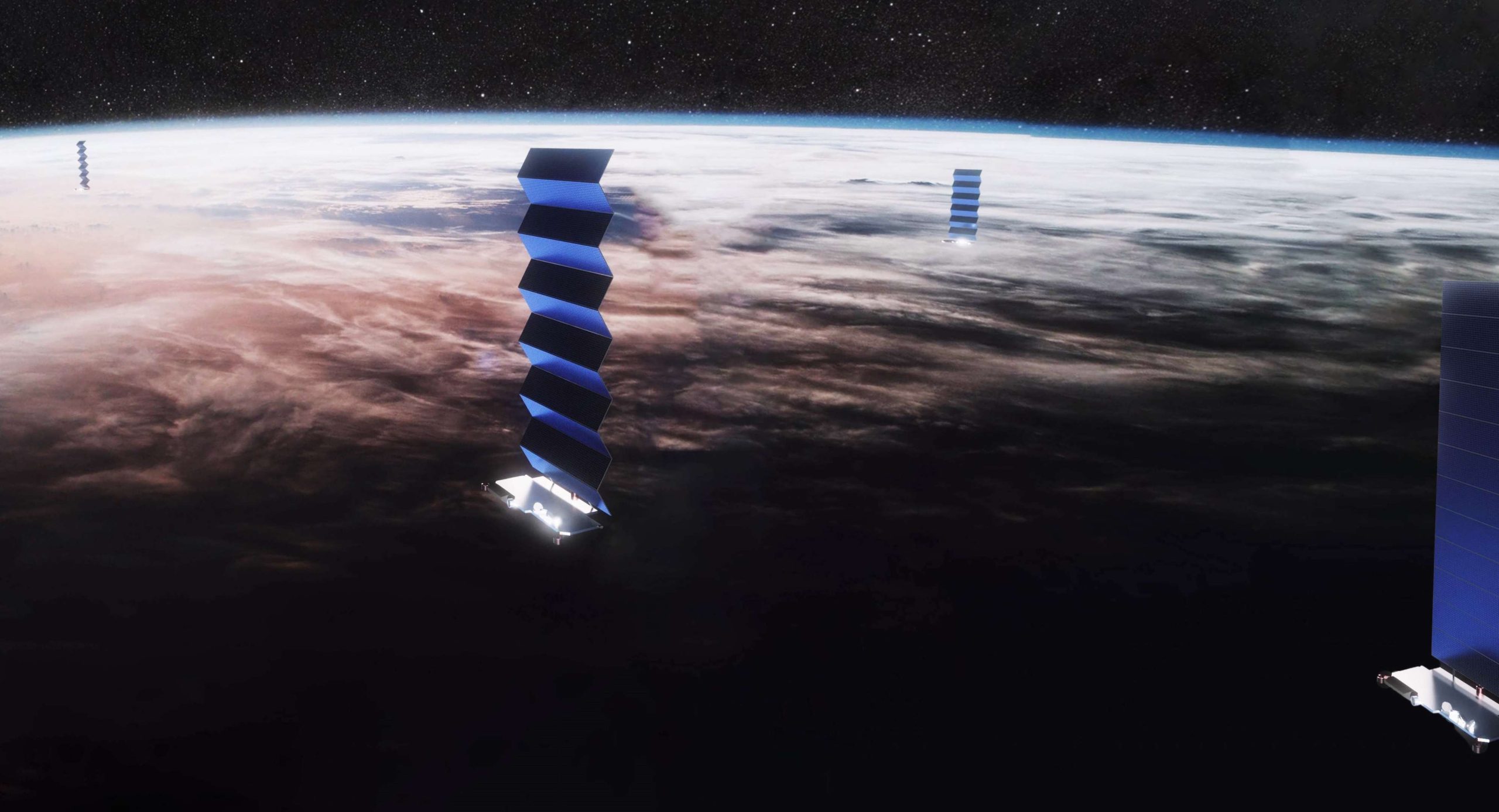
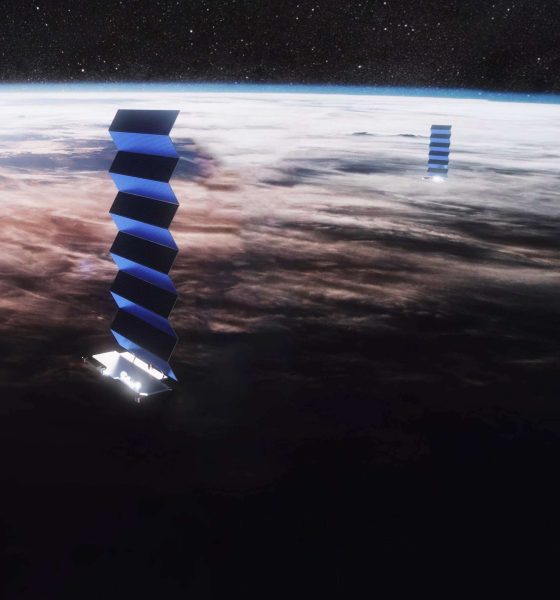
News
SpaceX is in no rush for a Starlink IPO and that should terrify competitors
SpaceX President Gwynne Shotwell says that the Starlink satellite internet business is in no rush to become a separate company and pursue an IPO, and that relaxed demeanor should terrify competitor constellations and ISPs like OneWeb and Comcast.
Announced in January 2015, SpaceX has been developing a massive constellation of satellites capable of delivering high-quality broadband internet anywhere on Earth for half a decade. Known as Starlink, SpaceX launched its first dedicated satellite prototypes – known as Tintin A and B – in February 2018, serving as a very successful alpha test for the myriad technologies the company would need to master to realize the constellation’s goals. 15 months later, SpaceX launched its first batch of 60 radically-redesigned Starlink satellites – packed flat to fit in an unmodified Falcon 9 payload fairing.
Less than nine months after that first ‘v0.9’ mission, SpaceX has completed another three dedicated launches and made Starlink – now some 235 operational satellites strong – the world’s largest private satellite constellation by a huge margin. Now just two days away from its fifth Starlink launch, SpaceX’s second-in-command has revealed that the company will likely split Starlink off into its own separate company, enabling an IPO without sacrificing SpaceX’s broader freedom. However, Shotwell also made it clear that SpaceX is in no rush to do so, and that fact should strike fear into the hearts of Starlink’s many potential competitors.
Bloomberg first broke the news with a snippet revealing that SpaceX COO and President Gwynne Shotwell had told a private investor event that Starlink could eventually IPO as an independent company. While undeniably important, a SpaceX source – after confirming the news – also told Reuters reporter Joey Roulette that it would be “several years” before the company might kick off the process of a Starlink IPO.
While a seemingly small piece of information at face value, the fact that SpaceX is years away from a potential Starlink IPO implies that the company is incredibly confident in where it stands today. Given that SpaceX only started ramping up its Starlink production rates and launch cadence a handful of months ago, that apparent confidence – assuming SpaceX’s respected President and COO isn’t lying to the faces of prospective investors – is no small feat.
Thanks to that production and launch cadence ramp, SpaceX is likely in the midst of one of the most capital-straining periods its Starlink program will ever experience. As a private company, SpaceX’s balance sheets are a black box to the public, but it’s safe to say that the it’s going through – or has already gone through – a phase of “production hell” similar to what Tesla experienced when it began building Roadsters, Model S/Xs, and Model 3s.
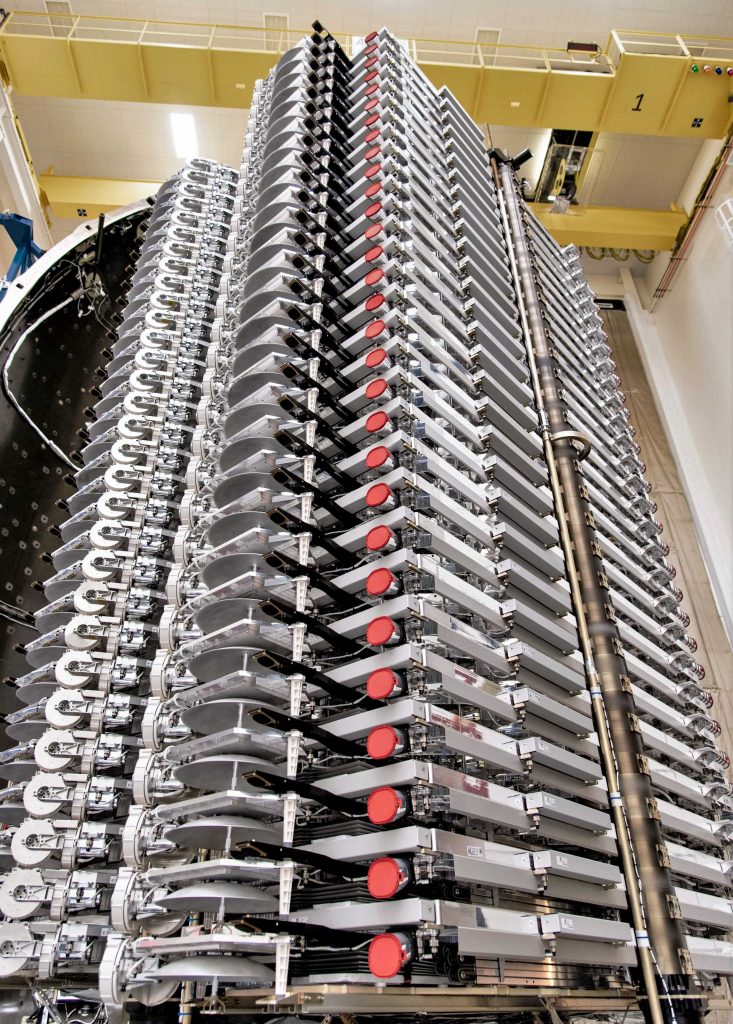
Building satellites like cars
In less than 12 months, SpaceX has effectively gone from manufacturing zero satellites to mass-producing something like 2-4 Starlink spacecraft every single day, almost without a doubt smashing any records previously held in the industry. It’s possible that companies like Planet (now the owner of the second-largest private constellation) or Spire have built more spacecraft in a given period, but SpaceX’s satellites are at least an order of magnitude larger, on average.
Around 260 kg (570 lb) apiece, SpaceX has built and launched a total of 240 spacecraft – together weighing more than 60 metric tons (135,000 lb) – in less than nine months. Furthermore, the company not only intends to crush that average but wants (if not needs) to do so for several years without interruption.
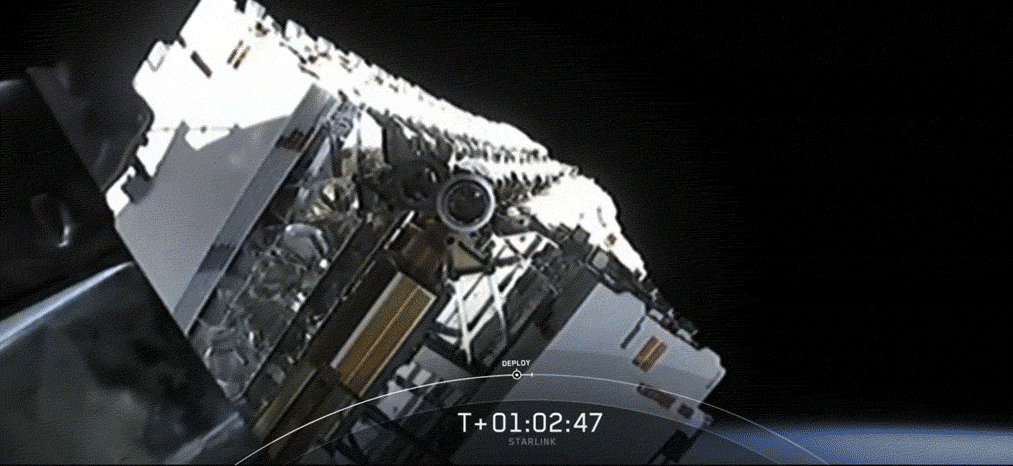
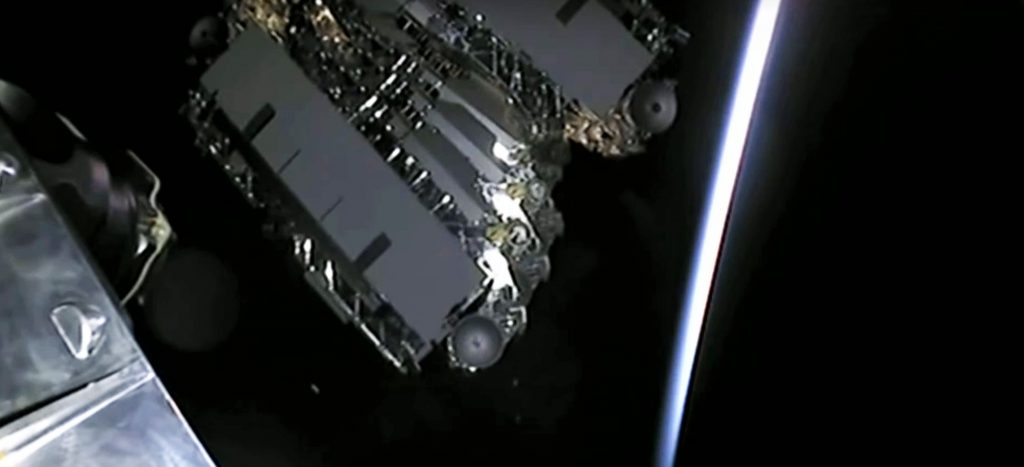
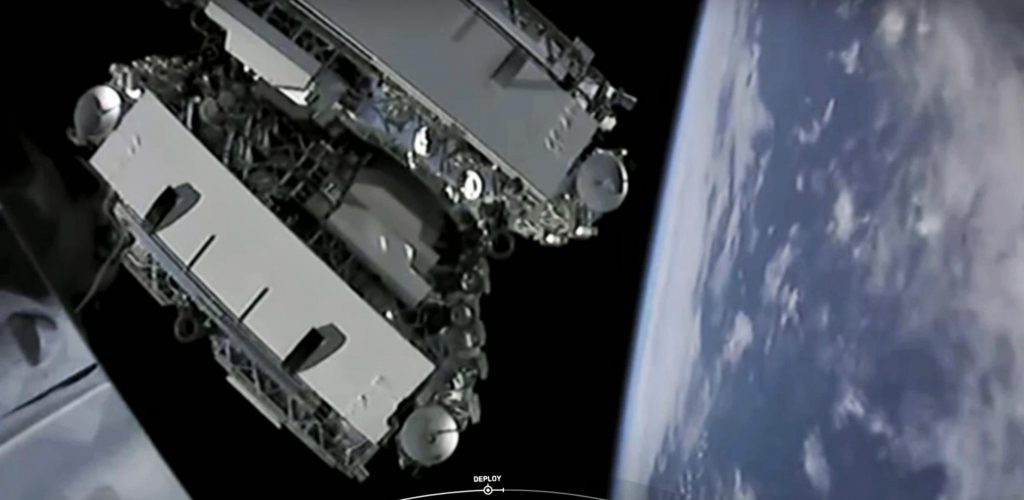
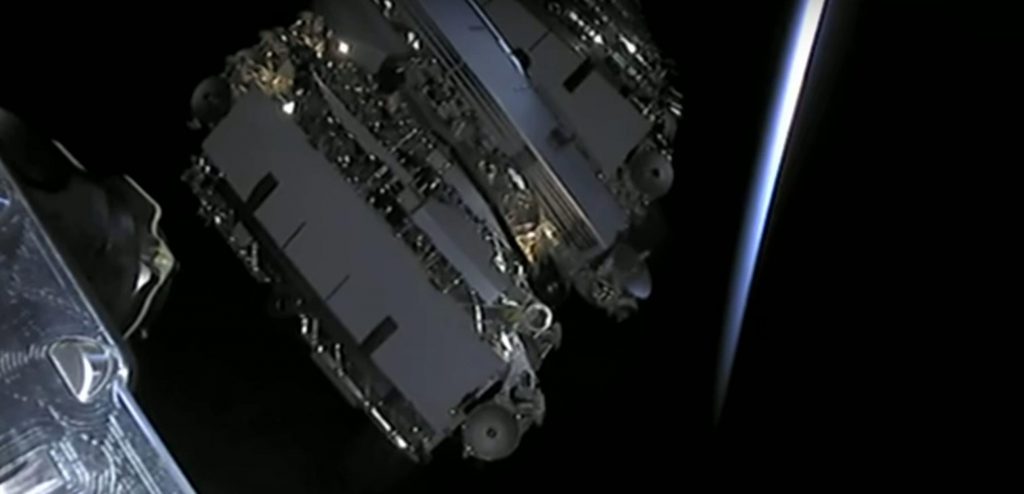
Back in May 2019, CEO Elon Musk confidently stated that he believes SpaceX already has all the capital it needs “to build an operational [Starlink] constellation”, likely referring to at least ~1500 operational communications satellites – launches included. This is why competitors should be moderately terrified that SpaceX isn’t even privately pushing for an IPO sooner than later. Perhaps the single biggest reason modern companies pursue IPOs is to raise substantial capital – usually far more than can be practically (or quickly) raised while private when executed successfully.
A step further, “several years” should mean titanic changes for SpaceX’s Starlink constellation if everything goes as planned. In 2020, SpaceX has publicly stated that it will attempt as many as 20-24 dedicated Starlink launches, an achievement that would translate to a constellation more than 1600 satellites strong by the end of the year. SpaceX says that 24 launches (20 if the first four missions are subtracted) is enough to offer global coverage and plans to begin serving customers in the northern US and Canada as early as this summer.

As of now, SpaceX has performed three 60-satellite Starlink launches total in the last three months – two in January 2020 alone – and Starlink V1 L4 (the fourth v1.0 launch and fifth launch overall) is scheduled to lift off just two days from now on February 15th. If Musk and Shotwell are correct and SpaceX can launch at least one or two thousand satellites without raising any additional capital, the constellation – potentially reaching those numbers by early to mid-2021 – may already have hundreds of thousands of customers by the time more funding is needed. 2000 Starlink v1.0 satellites, for reference, would theoretically offer enough collective bandwidth for more than 500,000 users to simultaneously stream Netflix content in 1080p.
As of early 2019, SpaceX had raised a total of $2B in venture capital, investments, and debt. Thus, even in the unlikely event that 100% of that funding goes to Starlink, the company would ultimately have to spend $500-700M annually from 2018 to the end of 2021 to run that large pool of capital dry by the time 1000-2000 satellites are in orbit.
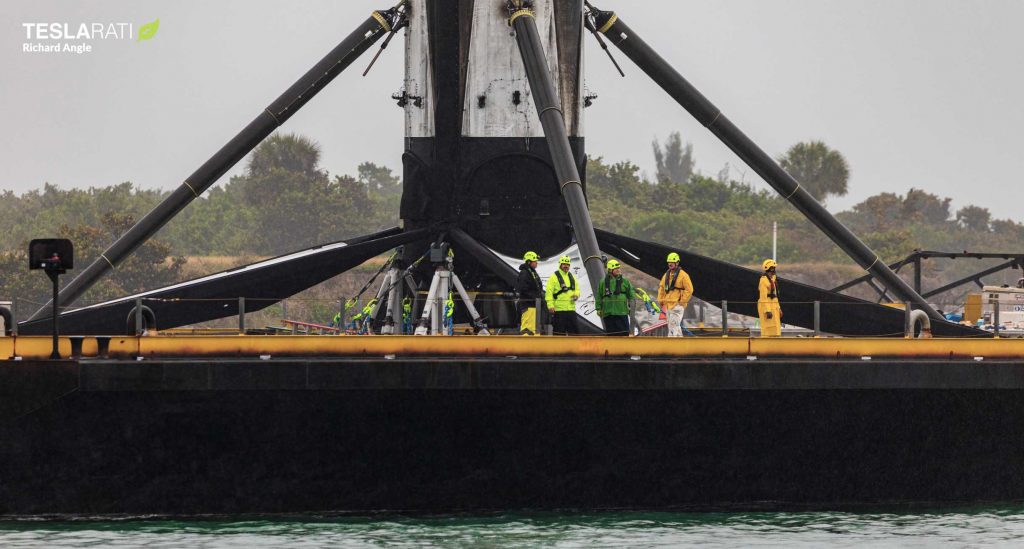
500,000 customers paying $50-100 per month by the end of 2021 would conservatively allow Starlink to generate $300-600M in annual revenue, excluding the likely possibility of even more lucrative government or commercial contracts. In other words, if SpaceX can accumulate an average of 20,000 paying subscribers per month between now and the end of 2021, Starlink could very well become self-sustaining at its current rate of growth – or close to it – by the time SpaceX is hurting for more funding. In a worst-case scenario, it thus appears all but certain that “several years” from now, SpaceX’s Starlink program will have at least a few thousand high-performance satellites in orbit, an extensive network of ground stations, and a large swath of alpha or beta customers by the time IPO proceedings begin.
Given that all that potential infrastructure would easily be worth at least $1-2B purely from a capital investment standpoint, Starlink’s ultimate IPO valuation – under Shotwell’s patient “maybe one day” approach – could be stratospheric.
Check out Teslarati’s Marketplace! We offer Tesla accessories, including for the Tesla Cybertruck and Tesla Model 3.

News
Tesla stands to win big from potential adjustment to autonomous vehicle limitations
Enabling scale, innovation, and profitability in a sector that is growing quickly would benefit Tesla significantly, especially as it has established itself as a leader.

Tesla stands to be a big winner from a potential easing of limitations on autonomous vehicle development, as the United States government could back off from the restrictions placed on companies developing self-driving car programs.
The U.S. House Energy and Commerce subcommittee will hold a hearing later this month that will aim to accelerate the deployment of autonomous vehicles. There are several key proposals that could impact the development of self-driving cars and potentially accelerate the deployment of this technology across the country.
These key proposals include raising the NHTSA’s exemption cap from 2,500 to 90,000 vehicles per year per automaker, preempting state-level regulations on autonomous vehicle systems, and mandating NHTSA guidelines for calibrating advanced driver assistance systems (ADAS).
Congress, to this point, has been divided on AV rules, with past bills like the 2017 House-passed measure stalling in the Senate. Recent pushes come from automakers urging the Trump administration to act faster amid competition from Chinese companies.
Companies like Tesla, who launched a Robotaxi service in Austin and the Bay Area last year, and Alphabet’s Waymo are highlighted as potential beneficiaries from lighter sanctions on AV development.
The NHTSA recently pledged to adopt a quicker exemption review for autonomous vehicle companies, and supporters of self-driving tech argue this will boost U.S. innovation, while critics are concerned about safety and job risks.
How Tesla Could Benefit from the Proposed Legislation
Tesla, under CEO Elon Musk’s leadership, has positioned itself as a pioneer in autonomous driving technology with its Full Self-Driving software and ambitious Robotaxi plans, including the Cybercab, which was unveiled in late 2024.
The draft legislation under consideration by the U.S. House subcommittee could provide Tesla with significant advantages, potentially transforming its operational and financial landscape.
NHTSA Exemption Cap Increase
First, the proposed increase in the NHTSA exemption cap from 2,500 to 90,000 vehicles annually would allow Tesla to scale up development dramatically.
Currently, regulatory hurdles limit how many fully autonomous vehicles can hit the roads without exhaustive approvals. For Tesla, this means accelerating the rollout of its robotaxi fleet, which Musk envisions as a network of millions of vehicles generating recurring revenue through ride-hailing. With Tesla’s vast existing fleet of over 6 million vehicles equipped with FSD hardware, a higher cap could enable rapid conversion and deployment, turning parked cars into profit centers overnight.
Preempting State Regulations
A united Federal framework would be created if it could preempt State regulations, eliminating the patchwork of rules that currently complicate interstate operations. Tesla has faced scrutiny and restrictions in states like California, especially as it has faced harsh criticism through imposed testing limits.
A federal override of State-level rules would reduce legal battles, compliance costs, and delays, allowing Tesla to expand services nationwide more seamlessly.
This is crucial for Tesla’s growth strategy, as it operates in multiple markets and aims for a coast-to-coast Robotaxi network, competing directly with Waymo’s city-specific expansions.
Bringing Safety Standards to the Present Day
Innovation in the passenger transportation sector has continued to outpace both State and Federal-level legislation, which has caused a lag in the development of many things, most notably, self-driving technology.
Updating these outdated safety standards, especially waiving requirements for steering wheels or mirrors, directly benefits Tesla’s innovative designs. Tesla wanted to ship Cybertruck without side mirrors, but Federal regulations required the company to equip the pickup with them.
Cybercab is also planned to be released without a steering wheel or pedals, and is tailored for full autonomy, but current rules would mandate human-ready features.
Streamlined NHTSA reviews would further expedite approvals, addressing Tesla’s complaints about bureaucratic slowdowns. In a letter written in June to the Trump Administration, automakers, including Tesla, urged faster action, and this legislation could deliver it.
In Summary
This legislation represents a potential regulatory tailwind for Tesla, but it still relies on the government to put forth action to make things easier from a regulatory perspective. Enabling scale, innovation, and profitability in a sector that is growing quickly would benefit Tesla significantly, especially as it has established itself as a leader.
News
Nvidia CEO Jensen Huang explains difference between Tesla FSD and Alpamayo
“Tesla’s FSD stack is completely world-class,” the Nvidia CEO said.

NVIDIA CEO Jensen Huang has offered high praise for Tesla’s Full Self-Driving (FSD) system during a Q&A at CES 2026, calling it “world-class” and “state-of-the-art” in design, training, and performance.
More importantly, he also shared some insights about the key differences between FSD and Nvidia’s recently announced Alpamayo system.
Jensen Huang’s praise for Tesla FSD
Nvidia made headlines at CES following its announcement of Alpamayo, which uses artificial intelligence to accelerate the development of autonomous driving solutions. Due to its focus on AI, many started speculating that Alpamayo would be a direct rival to FSD. This was somewhat addressed by Elon Musk, who predicted that “they will find that it’s easy to get to 99% and then super hard to solve the long tail of the distribution.”
During his Q&A, Nvidia CEO Jensen Huang was asked about the difference between FSD and Alpamayo. His response was extensive:
“Tesla’s FSD stack is completely world-class. They’ve been working on it for quite some time. It’s world-class not only in the number of miles it’s accumulated, but in the way it’s designed, the way they do training, data collection, curation, synthetic data generation, and all of their simulation technologies.
“Of course, the latest generation is end-to-end Full Self-Driving—meaning it’s one large model trained end to end. And so… Elon’s AD system is, in every way, 100% state-of-the-art. I’m really quite impressed by the technology. I have it, and I drive it in our house, and it works incredibly well,” the Nvidia CEO said.
Nvidia’s platform approach vs Tesla’s integration
Huang also stated that Nvidia’s Alpamayo system was built around a fundamentally different philosophy from Tesla’s. Rather than developing self-driving cars itself, Nvidia supplies the full autonomous technology stack for other companies to use.
“Nvidia doesn’t build self-driving cars. We build the full stack so others can,” Huang said, explaining that Nvidia provides separate systems for training, simulation, and in-vehicle computing, all supported by shared software.
He added that customers can adopt as much or as little of the platform as they need, noting that Nvidia works across the industry, including with Tesla on training systems and companies like Waymo, XPeng, and Nuro on vehicle computing.
“So our system is really quite pervasive because we’re a technology platform provider. That’s the primary difference. There’s no question in our mind that, of the billion cars on the road today, in another 10 years’ time, hundreds of millions of them will have great autonomous capability. This is likely one of the largest, fastest-growing technology industries over the next decade.”
He also emphasized Nvidia’s open approach, saying the company open-sources its models and helps partners train their own systems. “We’re not a self-driving car company. We’re enabling the autonomous industry,” Huang said.
Elon Musk
Elon Musk confirms xAI’s purchase of five 380 MW natural gas turbines
The deal, which was confirmed by Musk on X, highlights xAI’s effort to aggressively scale its operations.

xAI, Elon Musk’s artificial intelligence startup, has purchased five additional 380 MW natural gas turbines from South Korea’s Doosan Enerbility to power its growing supercomputer clusters.
The deal, which was confirmed by Musk on X, highlights xAI’s effort to aggressively scale its operations.
xAI’s turbine deal details
News of xAI’s new turbines was shared on social media platform X, with user @SemiAnalysis_ stating that the turbines were produced by South Korea’s Doosan Enerbility. As noted in an Asian Business Daily report, Doosan Enerbility announced last October that it signed a contract to supply two 380 MW gas turbines for a major U.S. tech company. Doosan later noted in December that it secured an order for three more 380 MW gas turbines.
As per the X user, the gas turbines would power an additional 600,000+ GB200 NVL72 equivalent size cluster. This should make xAI’s facilities among the largest in the world. In a reply, Elon Musk confirmed that xAI did purchase the turbines. “True,” Musk wrote in a post on X.
xAI’s ambitions
Recent reports have indicated that xAI closed an upsized $20 billion Series E funding round, exceeding the initial $15 billion target to fuel rapid infrastructure scaling and AI product development. The funding, as per the AI startup, “will accelerate our world-leading infrastructure buildout, enable the rapid development and deployment of transformative AI products.”
The company also teased the rollout of its upcoming frontier AI model. “Looking ahead, Grok 5 is currently in training, and we are focused on launching innovative new consumer and enterprise products that harness the power of Grok, Colossus, and 𝕏 to transform how we live, work, and play,” xAI wrote in a post on its website.








